See below for recent research highlights and see to the right for SFA-related news.
Click here for a listing of SFA publications and other products.
Click here for a 2-page Department of Energy brochure describing the SFA project.
Scientific Focus Area
See below for recent research highlights and see to the right for SFA-related news.
Click here for a listing of SFA publications and other products.
Click here for a 2-page Department of Energy brochure describing the SFA project.
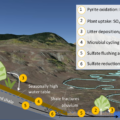
Biological transformations of sulfur in water-saturated sediments may partially offset increased sulfur released from rocks due to climate change.
Read More »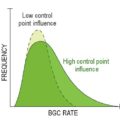
Modeling specific times and areas that experience enhanced environmental reaction rates can provide an important basis for planning, managing, and protecting natural resources and ecosystem function.
Read More »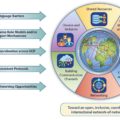
This journal article explores how opening dialogues and enhancing communication streams can be extremely beneficial to science.
Read More »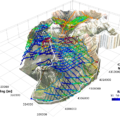
Machine learning finds relationships between above and belowground features to estimate bedrock properties across an entire watershed
Read More »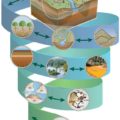
Since the late 1980s, findings from DOE-supported science close knowledge gaps involving ecosystem science and contribute to developing a secure water and energy future.
Read More »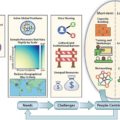
Biogeoscience needs Integrated, Coordinated, Open, and Networked (ICON) principles to address global problems and reduce geographical bias limiting scientific progress.
Read More »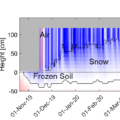
More accurate depth resolved measurements of snow and soil temperatures allow scientists to better understand water and carbon fluxes that occur on many scales – from ecosystems to micrometers.
Read More »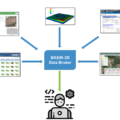
BASIN-3D is a tool developed by Berkeley Lab researchers that reduces the data processing burden for Earth scientists by making it easier to pull together data from different sources.
Read More »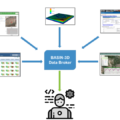
BASIN-3D reduces the data processing burden for Earth scientists by making it easier to pull together data from different sources.
Read More »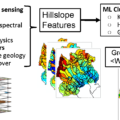
This study developed a watershed zonation approach for characterizing watershed organization and function in a tractable manner by integrating multiple spatial data layers.
Read More »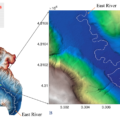
Omission patterns are a key to effectively estimate missing groundwater data. A sequential gap-filling strategy is required to estimate extremes of a hydrograph.
Read More »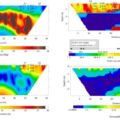
A surface geophysical method called spectral induced polarization tomography was used for the first time ever to estimate soil physical and chemical properties at the field scale.
Read More »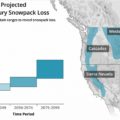
With mountain snowpacks shrinking globally, a new study analyzes when a low-to-no-snow future might arrive in the western U.S. and the implications for water management.
Read More »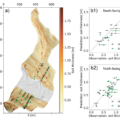
A hybrid data—model approach improves the accuracy of mapping soil thickness as well as soil transport rate and soil production rate in a high resolution, which can be essential for surface process models.
Read More »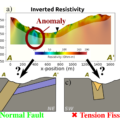
New machine learning methods help scientists rank interpretations of geophysical data – and in the process understand important groundwater flow pathways.
Read More »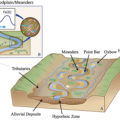
In this editorial, the authors put forth that dynamic hydrologic connectivity is a primary factor leading to high biogeochemical activity in riparian corridors.
Read More »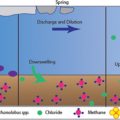
Fluvially-produced methane is a significant contributor to atmospheric concentrations and more complete annual sampling will lend insight and better accountability for global methane budgets.
Read More »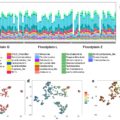
Meander-bound floodplains share a core microbiome and serve as a scaling motif for watershed-scale models of microbially-mediated biogeochemical processes.
Read More »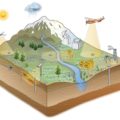
An overview of the spatially extensive, heterogeneous measurements and public datasets collected at the East River Watershed, Colorado.
Read More »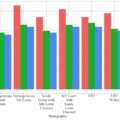
This is the first-of-its-kind study to quantify how legacy nitrogen in agricultural environments responds to changing hydrologic application rates and frequencies under agricultural managed aquifer recharge (AgMAR).
Read More »
The award was given for Jill’s contributions to the understanding of microbial communities and interactions between microbes and the environment.
Read More »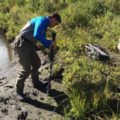
In its inaugural year, the 2022 LBNL Director’s Stewardship Award has been awarded to Ken Williams, the Watershed Function SFA Deputy Lead for Operations. The award was given in recognition of Ken’s efforts in establishing the East River study site as a community observatory that serves a vast network of collaborators. Read more » Award […]
Read More »
Sebastian Uhlemann has been named the recipient of the Near-Surface Geophysics Early Career Achievement Award from AGU.
Read More »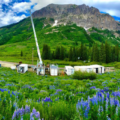
Featured in Science Magazine, the Surface Atmosphere Integrated Field Laboratory (SAIL) will make its debut at the East River, CO Watershed in September 2021.
Read More »
Rosemary Carroll speaks with NPR about monsoons and snowpack in the East River watershed.
Read More »
SFA Field Deputy Ken Williams was interviewed for the Sopris Sun, a newspaper based out of Carbondale, CO.
Read More »
Heidi Steltzer speaks about the power of narrative to inspire climate activism on KBUT, a community radio station in Gunnison County, CO.
Read More »
Results showed monsoon rains produced half the amount of streamflow compared to spring snow of the same water input.
Read More »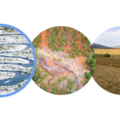
Using the ArcGIS StoryMaps platform and stunning visuals, the story focuses on the Colorado Upper Gunnison River Basin—home to the Watershed Function SFA’s study site, the East River Watershed.
Read More »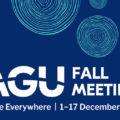
Researchers from the Watershed Function SFA are thoroughly engaged in this year’s 2020 AGU fall meeting, which will take place virtually December 1 – 17, 2020.
Read More »
A U.S. Department of Energy National Laboratory Managed by the University of California